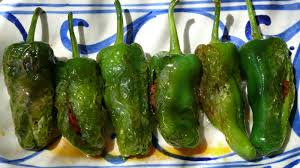Memorial Day weekend
marks the beginning of the summer season.
Summer always makes me think of the beach, but it also makes me think of
Vermentino, Rosé, Sancerre, Torrontes, Viognier and Albariño, along with light
reds such as Frapatto and Pinot Noir. Below
are a list in alphabetic order of half a dozen vacation spots on five different
continents that offer fantastic enticements for the beach lover, paired with a
wine district <50 miles away.
Canary Islands, Spain
The Canaries have become
immensely popular with Northern Europeans who come here by the planeloads to
soak up the never-ending sunshine at seemingly never-ending beaches. Located just off the coast of Africa, the Canaries
were formed from underwater volcanoes millions of years ago. Their volcanic soil makes for some of Spain’s
most interesting white wines: appealing mineral notes from the soil and
well-ripened fruit (think tropical fruits) from the abundance of sun. Many wine experts are agreeing that the
Canaries are making fascinating wines.
Check out the islands of Gran Canaria and the smaller Lanzarote; at both
you’ll be surrounded by breathtaking beaches and vineyards.
Breathtaking inlets such as this are only a few minutes from Cassis.
Cassis, France
You may have not heard of
this gem of a beach town as it doesn’t have the same panache as jet-setting St. Tropez, Cannes or Antibes.
While St. Tropez has bazillion Euro yachts, art galleries, and wannabes
in skimpy bikinis, Cassis offers something much more majestic: drop-dead gorgeous coves and beaches, along
with one of the prettiest harbors you’ve ever seen. While Americans flock to St Tropez, Europeans
head to Cassis for an unspoiled view of French beach life. The best part? Two wine areas are within and easy
reach. One appellation, located in the
hills just outside the village, makes lovely whites (Cassis A.O.C.). The second area is Bandol, <30 minutes
away where some rock star red wines are crafted.
Carmel-by-the-Sea, California
Many people don’t know
that Carmel has one of the most magical beaches in the state. (That’s because the storybook hamlet of
Carmel is so ultra-charming that visitors never make it to the very end of the
main street….regrettably, the beach is only a few blocks further downhill from
the last of the village’s irresistible boutiques). Many people, awe-struck by the beauty of
Carmel, may not realize that they are also in close proximity of some
terrific wineries. Carmel Valley is an
easy 20 minute trek where you will find several wineries (love Talbott) and
some great restaurants (try Corkscrew Café for lunch). However, if you don’t want to drive, many of
the area’s wineries are opening up tasting rooms in the village of
Carmel-by-the-Sea (don’t miss De la Tierra which offers good quality price
ratio wines in an attractive tasting room).
Melborne, Australia
If you can possibly tear
yourself away from Melbourne’s charming 19th century Victorian-laced
downtown, then head to its beach area.
It was a no-brainer to put this dramatic coastline on the list. Not far from this shoreline are two
different wine districts. My favorite
is the Mornington Penninsula which
offers some of the most stunning beaches I’ve seen. Try the award-winning wines of Paringa and
Red Hill, the last of which offers jaw dropping vistas of the seashore. The other wine district, Geelong, is also
worth a jaunt.
Sardinia, Italy
One of my favorite summer
varietals is Vermentino. One of my
favorite beach experiences of my entire life was at the magnifico
hotel, Pitrizza (www.pitrizzahotel.com) on the island of Sardenia, where the best Vermentino’s in the world
are produced Developed by the Aga Kahn
in the 1960’s and now owned by the Emir of Quatar (one of the world’s richest
men), the place is the epitome of quiet elegance. Located on the island’s “Emerald Coast,” it’s
within driving distance of wineries (that is, if you can possibly tear
yourself away from La Pitrizza.)
Viña del Mar, Chile
Referred to by Chileans
as “Viña,” this several mile long beach area is located just outside of
Valapariso, one of the country’s main cities (and only 100 miles from the
capital of Santiago). Immensely popular
with South American beach lovers, Viña seems to have it all: powdered-sugar-sand, delightful beach-side
restaurants, gentle waves for families, and nightlife for every decade. Oh yeah, the Casablanca wine district is
nearby which means opportunities in this mecca for whites and cool weather
reds. Opt for tastings at Veramonte and
Morandé, the latter of which has an upscale restaurant with a cutting edge
chef.


















